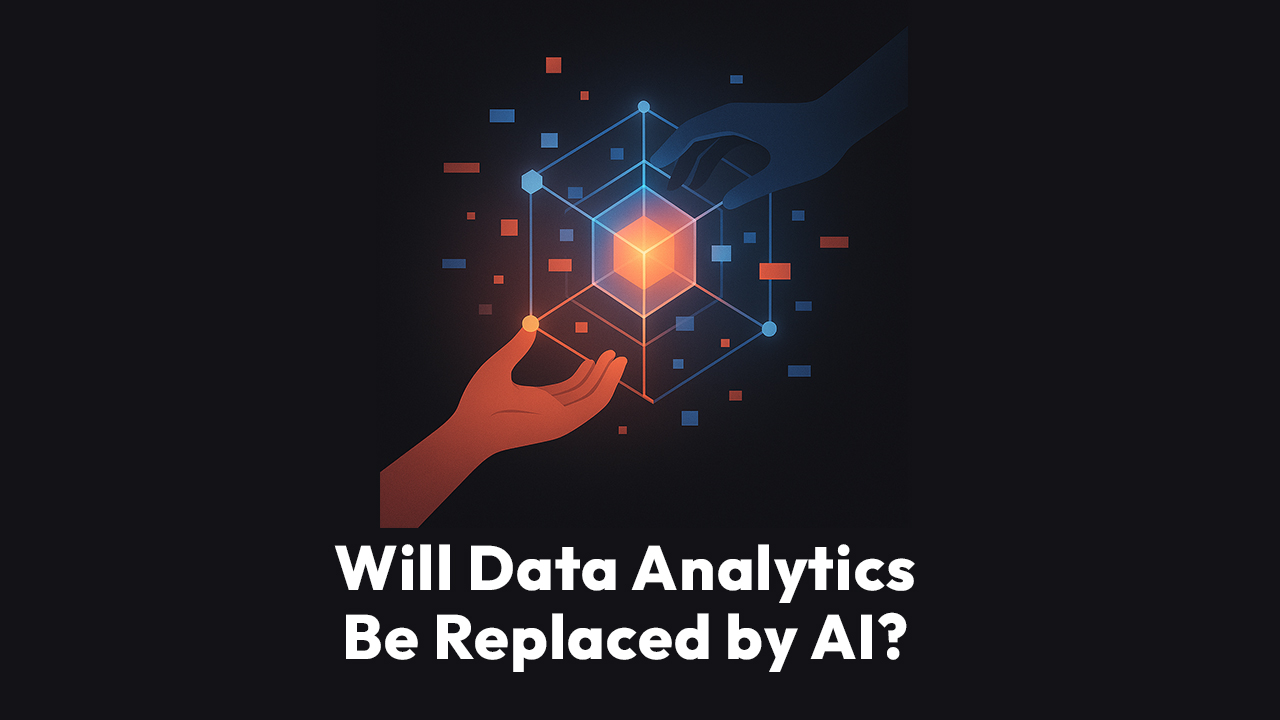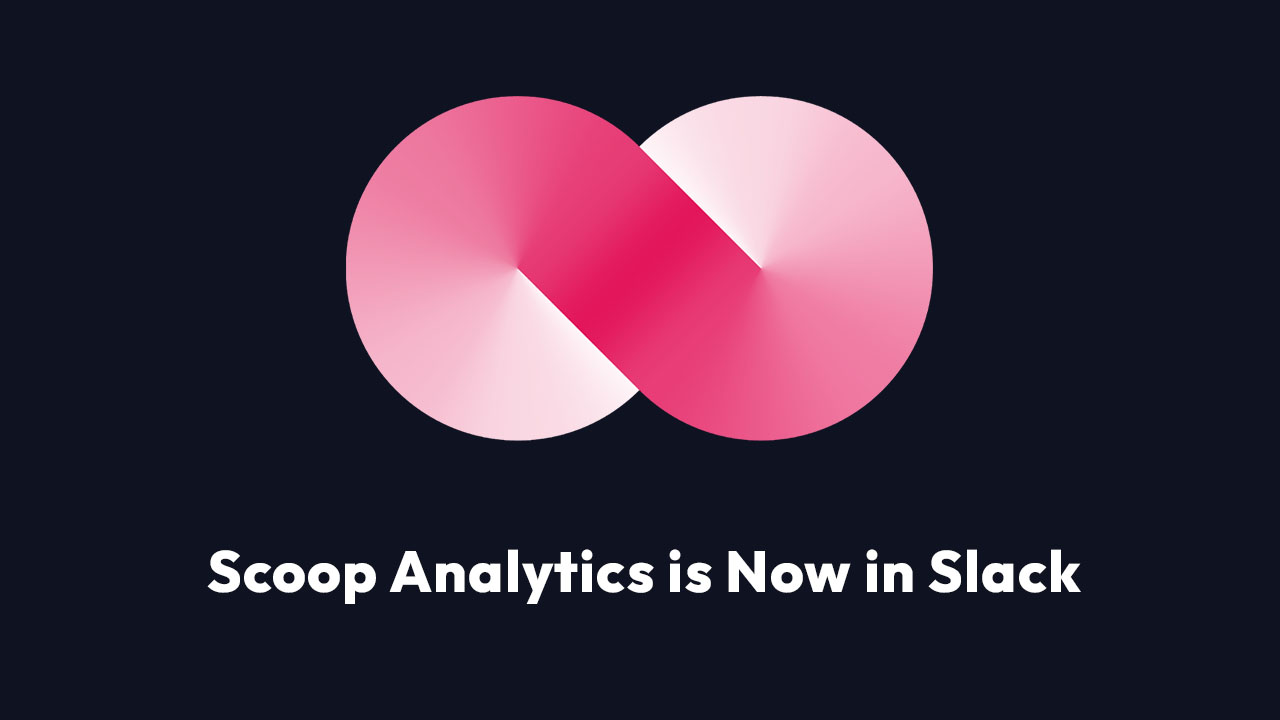What Business Leaders Need to Know
Data Analytics will be transformed.
AI is changing how data analytics works, not why it matters.
Instead of replacing data analysts, artificial intelligence is becoming their most powerful co-pilot—automating repetitive work and empowering humans to make faster, more strategic decisions.
Let’s unpack that together.
What Is Actually Changing in Data Analytics?
In short: AI is automating data prep, not replacing data thinking.
Artificial intelligence—especially generative AI and large language models—can clean, sort, and visualize data at record speed. It can summarize patterns, generate SQL queries, and even write the code for predictive models.
But here’s the catch: AI can only process what it’s given. It can’t decide what questions matter most to your business.
A report from Coursera explains that AI automates tasks like data cleaning, visualization, and forecasting—but it doesn’t remove the need for analysts who can communicate results, ensure ethical use, and interpret business context. In fact, the U.S. Bureau of Labor Statistics projects a 36% growth in data analyst jobs by 2033—a rate far above the national average. That’s hardly a dying field.
So, while AI may handle the “how,” humans still own the “why.”
How Does AI Transform the Role of Data Analysts?
In a few words, from data executors to data strategists.
Traditionally, analysts spent up to 80% of their time cleaning, organizing, and preparing data before they could even begin to interpret it. AI tools like ChatGPT’s Advanced Data Analysis, Power BI Copilot, and Google Vertex AI are changing that dynamic.
Now, analysts can:
- Automate data prep – LLMs identify missing values, correct inconsistencies, and format datasets in seconds.
- Generate code – AI can write SQL queries or Python scripts based on plain English prompts.
- Run “what-if” simulations – Analysts can use natural language to ask, “What if we cut inventory costs by 10%?” and get predictive outcomes instantly.
- Focus on interpretation – With less time spent on grunt work, analysts now devote more effort to storytelling, decision-making, and strategic foresight.
The Exponent report calls this new generation of professionals “Augmented Analysts.” They’re not competing with AI—they’re orchestrating it. They design workflows where humans and machines work together, each playing to their strengths.
Why AI Won’t Replace the Human Element
Because insights still need intuition!
Let’s be blunt: AI doesn’t understand context. It doesn’t know when a correlation is meaningless or when a data trend contradicts business reality. It can’t sit in a meeting, listen to a client’s concern, and reframe the data to match their priorities.
Donald Farmer, a 30-year analytics veteran writing for TechTarget, puts it perfectly:
“AI can process large datasets and provide quantitative analysis. But it can’t understand the subtleties of human behavior or motivation.”
Think about that. Data is never neutral—it’s shaped by choices, by people, by markets. Understanding the “why” behind numbers requires empathy, industry experience, and judgment.
Even when AI generates insights, it’s the human analyst who validates them, detects bias, and applies business logic. Without that oversight, companies risk making decisions based on inaccurate or unethical recommendations.
If you’re leading a business or data team, this is your roadmap. Don’t train your people to compete with AI. Train them to direct it.
What Are the Risks of Letting AI Run the Show?
In short: Efficiency without oversight can become a liability.
AI is only as good as the data it learns from. Feed it biased, incomplete, or outdated information, and it will confidently produce misleading insights.
Consider this:
- Bias – If an AI system trained on historical hiring data favors certain demographics, your analytics will reinforce those inequities.
- Data privacy – AI tools may inadvertently use sensitive or personal information unless data governance policies are airtight.
- Accuracy – Generative AI can produce hallucinations—false insights that sound convincing but are entirely wrong.
That’s why experts emphasize the “trust but verify” approach. AI can handle scale, but humans must handle sense.
Businesses that adopt AI recklessly may face not only flawed decisions but also regulatory backlash. Frameworks like GDPR, CCPA, and emerging AI ethics laws already demand proof of data transparency and human accountability.
How Can Business Operations Leaders Adapt to AI Analytics?
The smartest companies aren’t asking, “Will AI replace data analyst roles?” They’re asking, “How can we combine human expertise with AI speed?”
Here’s a three-step blueprint to follow:
Start Small, Scale Fast
Identify one process AI can realistically automate—like monthly sales reporting or anomaly detection. Test it. Measure outcomes. Then expand.
Build Human-AI Teams
Encourage collaboration between data analysts, engineers, and decision-makers. The goal isn’t just faster reporting—it’s smarter problem-solving.
Prioritize Data Governance
Before rolling out AI tools, ensure your data infrastructure is secure, compliant, and well-documented. As Champlain College noted, ethics and privacy aren’t afterthoughts—they’re business imperatives.
This hybrid model not only improves efficiency but also builds confidence among teams who might otherwise see AI as a threat.
What Does the Future of Data Analytics Look Like?
In short: More automation, more opportunity.
AI isn’t the end of data analytics—it’s the beginning of a new era. The future analyst isn’t a data janitor cleaning spreadsheets all day. They’re a strategic orchestrator using AI to simulate outcomes, predict disruptions, and influence leadership decisions in real time.
We’ll see new titles emerge:
- AI Data Analyst
- Prompt Engineer
- Workflow Automation Specialist
- AI Insights Architect
These roles merge technical capability with business intuition. They’ll focus less on collecting data and more on curating insight ecosystems—where AI models, cloud tools, and human analysts continuously feed and validate one another.
Real-World Example: AI and Human Insight in Action
Imagine an e-commerce company using AI to forecast inventory.
The AI notices that sales of wireless headphones spike every December and recommends doubling production.
Smart, right?
But the analyst remembers that last December’s spike was driven by a viral TikTok trend—one that’s unlikely to repeat. Instead of following AI blindly, the analyst adjusts the forecast, saving the company from a costly overstock.
That’s not science fiction. That’s the everyday reality of human-in-the-loop analytics—the blend of machine precision and human perspective that defines the future of decision-making.
Ethical and Strategic Considerations for Leaders
AI’s ethical implications aren’t optional anymore—they’re operational.
Business operations leaders must balance innovation with integrity.
Here’s what that looks like in practice:
- Transparency: Disclose when and how AI is used in decision-making.
- Bias audits: Regularly test models for discriminatory outputs.
- Human review: Require human sign-off for all AI-generated recommendations.
- Training: Provide teams with workshops on ethical data use and bias detection.
This approach isn’t just about compliance—it’s about reputation. Trust is now a measurable asset. Companies that manage AI responsibly will win customers, partners, and investors who care about accountability.
FAQ:
Will data analytics be replaced by AI completely?
No. AI automates parts of the process, but it can’t interpret context, ethics, or strategy. Human analysts remain essential.
Will AI replace data analyst jobs in the future?
Some repetitive roles may disappear, but overall demand will grow. Analysts who combine AI fluency with business insight will thrive.
What skills should I learn to stay competitive?
Focus on AI literacy, critical thinking, data storytelling, and ethical governance. Learn to manage AI, not just use it.
How do I start implementing AI analytics in my organization?
Begin with small use cases—like automating reports or detecting anomalies—then expand to predictive modeling and natural-language querying.
Is AI safe for handling sensitive data?
Only if you enforce proper governance. Use encryption, limit access, and ensure compliance with privacy laws like GDPR and CCPA.
Conclusion
AI is redefining the landscape of data analytics, but not erasing it.
In fact, the rise of AI has made human insight even more valuable.
- Machines can recognize patterns—but humans understand meaning.
- Machines can process information—but humans can challenge it.
- Machines can predict outcomes—but humans can decide which ones matter.
So, will data analytics be replaced by AI? Not anytime soon.
But will AI replace parts of the data analyst’s job? Absolutely—and that’s a good thing.
Because every hour AI saves on data cleaning, a human analyst gains an hour to do what no algorithm can: think critically, act ethically, and drive business strategy forward.
The future of analytics isn’t man or machine. It’s man with machine.
And that collaboration—done right—is where real intelligence begins.








.png)